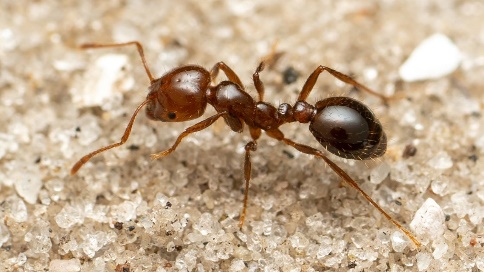





Disclaimer: Copyright infringement intended.
Context
About
Distribution
Habitat
Nature
Behavior
Food
|
PRACTICE QUESTION Q. Consider the following statements with reference to Red Imported Fire Ant. a) It is a species of ant native to South America. b) They show Necrophobic Behaviour. c) They remain outside at night. d) Worker ants communicate by a series of semiochemicals and pheromones. Which of the statements given above are incorrect? 1) a and d only 2) b and c only 3) a, b and d 4) None of the above. Correct Answer: None of the above. |
https://edition.cnn.com/2023/09/11/europe/invasive-red-fire-ant-europe-italy-scn/index.html







© 2025 iasgyan. All right reserved